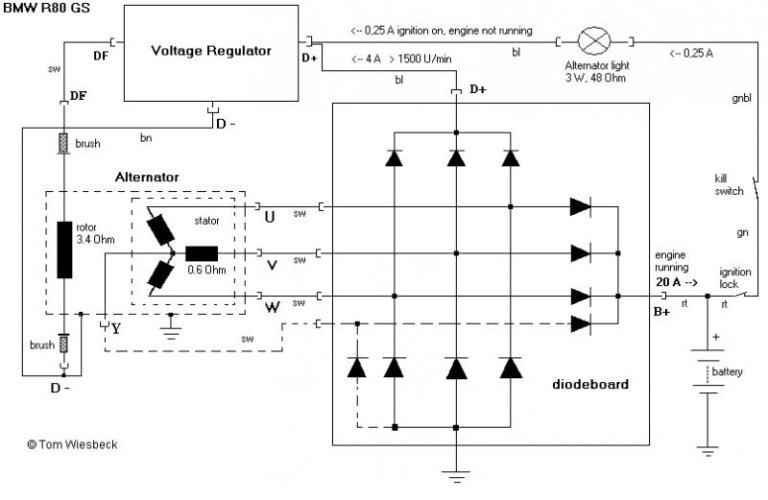stevenrankin
Active member
A thought
Hey Kurt, I understand fully what you are saying about the battery. In my long winded possibly incorrect (hey, I don't know it all, LOL) writings I mention the battery or some kind of energy from the system is needed to "energize" the alternator. This is one of the main differences between generators and alternators. I am not going to go into the other differences between the two.
I have not tried running a bike without the battery connected. With a point system, I might be inclined to try it just to see what happens. However, my one bike has an ignition module and my other has a Boyer Point replacement system. I don't want to invoke the gods of popped ignitions by trying it on these bikes. My luck, and I would be struck down with a blown module on the RT or a dead Boyer on the RS.
Perhaps, one of our more daring airhead owners who have bikes with points would be so kind as to try this to see what happens? If they do, I claim no responsibility for the results if they turn out bad.
Just to add, I mentioned the diode in the charging light system. Does it block current flow in one direction? I mean if the light circuit was energized all the time, the light would be on all the time. Something blocks current to the light when the system is charging and not running off the battery. Conversely, when the voltage drops, and the battery which is at a slightly lower voltage than the charging system kicks in, the current flows to illuminate the light.
The charging current to the battery is nearly always higher than the standing battery charge. Charging values should be 13.8 to 14.8 volts. A resting battery may read 12.5 or so when in proper condition. So, when the charging system at a higher voltage drops out of the system, the current at a lower voltage in a different path, kicks in. Our little diode says, OK current flow to the light.
I am sure some engineer or smarter person is reading my stuff and is shaking their head. I don't have much book learning, just a long time of experience. St.
Hey Kurt, I understand fully what you are saying about the battery. In my long winded possibly incorrect (hey, I don't know it all, LOL) writings I mention the battery or some kind of energy from the system is needed to "energize" the alternator. This is one of the main differences between generators and alternators. I am not going to go into the other differences between the two.
I have not tried running a bike without the battery connected. With a point system, I might be inclined to try it just to see what happens. However, my one bike has an ignition module and my other has a Boyer Point replacement system. I don't want to invoke the gods of popped ignitions by trying it on these bikes. My luck, and I would be struck down with a blown module on the RT or a dead Boyer on the RS.
Perhaps, one of our more daring airhead owners who have bikes with points would be so kind as to try this to see what happens? If they do, I claim no responsibility for the results if they turn out bad.
Just to add, I mentioned the diode in the charging light system. Does it block current flow in one direction? I mean if the light circuit was energized all the time, the light would be on all the time. Something blocks current to the light when the system is charging and not running off the battery. Conversely, when the voltage drops, and the battery which is at a slightly lower voltage than the charging system kicks in, the current flows to illuminate the light.
The charging current to the battery is nearly always higher than the standing battery charge. Charging values should be 13.8 to 14.8 volts. A resting battery may read 12.5 or so when in proper condition. So, when the charging system at a higher voltage drops out of the system, the current at a lower voltage in a different path, kicks in. Our little diode says, OK current flow to the light.
I am sure some engineer or smarter person is reading my stuff and is shaking their head. I don't have much book learning, just a long time of experience. St.

